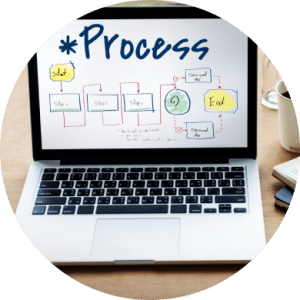Mastering Data Warehouse/ETL Testing: Best Practices for Accurate Data Management
Mastering Data Warehouse/ETL Testing: Best Practices for Accurate Data Management
In today’s data-driven business environment, ensuring that your data is accurate, consistent, and reliable is essential. As companies increasingly rely on data for decision-making, the role of Data Warehouse and ETL (Extract, Transform, Load) testing becomes even more critical. This blog will walk you through the best practices for mastering Data Warehouse/ETL testing to maintain the highest standards of data accuracy and integrity.
What is Data Warehouse/ETL Testing?

Data Warehouse/ETL testing is validating the data extracted from different source systems, transformed according to business rules, and then loaded into a data warehouse. The goal is to ensure that the data is correct, complete, and ready for use in business intelligence and reporting.
Why is Data Warehouse/ETL Testing Important?

Incorrect or incomplete data can lead to poor business decisions.

Ensures that data transformation rules are correctly applied.

Helps maintain the consistency and reliability of data across different systems.

Identifies bottlenecks in the ETL process that could impact system performance.
Best Practices for Data Warehouse/ETL Testing

Establish Clear Testing Objectives
Before starting the testing process, it’s crucial to define what you want to achieve. Whether your focus is on data accuracy, completeness, or performance, having clear objectives will help guide your testing efforts.
Objective Examples:
- Ensure that all data is correctly extracted from the source systems.
- Validate that all transformation rules are accurately applied.
- Confirm that data is loaded into the warehouse without any loss.
Create a Detailed Test Plan
A comprehensive test plan acts as a roadmap for your testing efforts. It should include:
- Scope of Testing: Define what will be tested (e.g., specific data sets, transformation logic, loading processes).
- Resources Required: Identify the tools, personnel, and environments needed for testing.
- Timelines: Establish a testing schedule with clear deadlines.
- Test Cases: Develop specific test cases to cover all aspects of the ETL process.


Leverage Automation
Automation can significantly improve the efficiency and effectiveness of your testing process. Automated tools can:
- Reduce Human Error: By automating repetitive tasks, you minimize the risk of mistakes.
- Save Time: Automated testing is faster than manual testing, especially for large data sets.
- Improve Consistency: Automated tests can be run repeatedly with the same results, ensuring consistency.
Popular ETL Testing Tools:
- Apache Nifi
- Talend
- Informatica
Validate Data at Every Stage
Data validation should be performed at each stage of the ETL process:
- Extraction: Ensure that the data extracted from the source systems matches the original data.
- Transformation: Verify that transformation rules are correctly applied and that the data is in the correct format.
- Loading: Confirm that the data is accurately loaded into the warehouse without any corruption or loss.


Conduct End-to-End Testing
End-to-end testing involves validating the entire data flow from the source systems to the final data warehouse. This approach ensures that:
- Data Flow is Consistent: Data flows correctly through the ETL process without any loss or corruption.
- Business Rules are Applied: Transformation rules are correctly implemented and aligned with business objectives.
- Performance is Optimized: The ETL process is optimized for performance, avoiding bottlenecks and delays.
Conclusion
Mastering Data Warehouse/ETL testing is essential for ensuring accurate and reliable data management. By following these best practices—establishing clear objectives, creating a detailed test plan, leveraging automation, validating data at every stage, and conducting end-to-end testing—you can ensure that your data warehouse is a trusted source of truth for your business.
Whether you are new to ETL testing or looking to refine your existing processes, implementing these strategies will help you maintain high data quality and drive better business outcomes.

